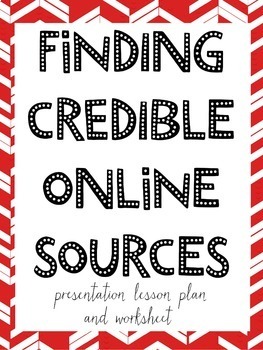How to Find Credible Online Sources for Research & Information
- PPTX
- Internet Activities
What educators are saying
Description
This lesson plan is a teacher- student guided presentation with accompanying worksheet on how to identify credible online sources for research and information.
It is often taught at the beginning of a school year, or reviewed before a big research project.
The teacher will project the presentation & students will 'fill in the blanks' on the worksheet while the teacher guides them on which domain suffixes (.com, .org, .edu, etc.) are the most reliable sources.
Then, as a class, students will be given examples in the presentation of a good or bad online source. They must identify it before the answer is revealed!
Simply project the presentation, copy & paste the public Google Docs link, print, copy, & enjoy!
*PREVIOUS GOOGLE DOC ACCESS ISSUE HAS BEEN RESOLVED





